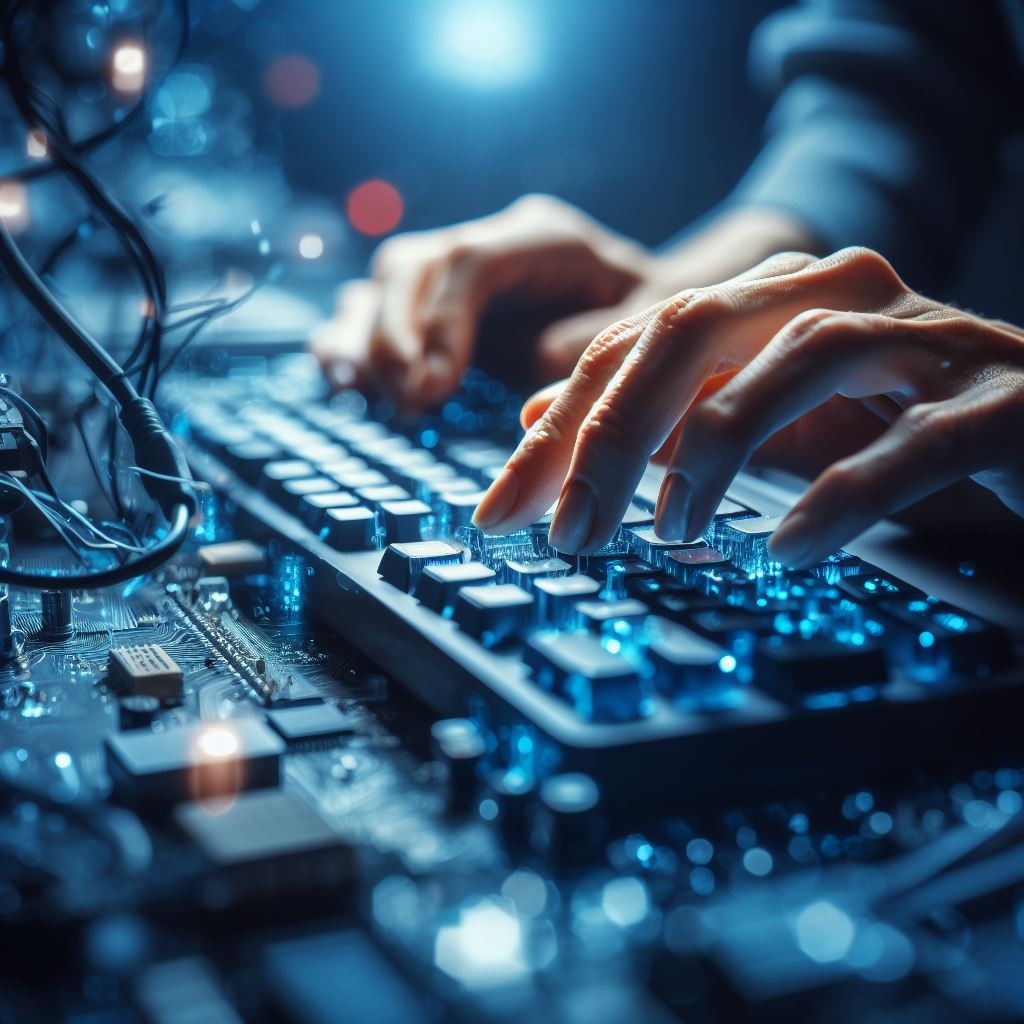Beyond Passwords: Stanislav Kondrashov Explores Advanced Authentication Methods
Biometric Authentication: The Future of Password-Free Security
In today’s digital age, passwords have become a ubiquitous part of our daily lives. From logging into our email accounts to accessing our bank accounts, passwords are the first line of defense in protecting our personal information. However, with the increasing number of cyber attacks and data breaches, it has become evident that passwords alone are no longer enough to ensure the security of our online accounts. This is where biometric authentication comes into play.
Biometric authentication is a method of verifying a person’s identity based on their unique physical or behavioral characteristics. This can include fingerprints, facial recognition, voice recognition, and even iris or retina scans. Unlike passwords, which can be easily forgotten, stolen, or hacked, biometric data is unique to each individual and cannot be replicated.
One of the leading experts in the field of biometric authentication is Stanislav Kondrashov. With over 20 years of experience in the technology industry, Kondrashov has been at the forefront of developing and implementing advanced authentication methods. In a recent interview, he shared his insights on the future of password-free security and the role of biometric authentication in achieving it.
According to Kondrashov, the use of biometric authentication is on the rise, and for good reason. Not only does it provide a more secure way of verifying identity, but it also offers a more convenient and user-friendly experience. With biometric authentication, there is no need to remember complex passwords or worry about them being compromised. Instead, users can simply use their unique physical or behavioral traits to access their accounts.
One of the most widely used forms of biometric authentication is fingerprint scanning. This method has been around for quite some time and is now a standard feature on most smartphones. Kondrashov believes that fingerprint scanning will continue to be a popular choice for biometric authentication, but there are also other methods that are gaining traction.
Facial recognition, for example, has seen a significant increase in adoption in recent years. With the advancements in technology, facial recognition has become more accurate and reliable, making it a viable option for biometric authentication. Kondrashov also predicts that voice recognition will become more prevalent, especially in the banking and financial sector, where security is of utmost importance.
While biometric authentication offers a more secure and convenient way of verifying identity, it is not without its challenges. One of the main concerns is the privacy of biometric data. Unlike passwords, which can be changed if compromised, biometric data is permanent and cannot be changed. This raises concerns about the potential misuse of this data by companies or hackers.
To address these concerns, Kondrashov emphasizes the importance of implementing strict regulations and guidelines for the collection and storage of biometric data. He also believes that users should have full control over their biometric data and be able to revoke access at any time.
In addition to privacy concerns, there are also technical challenges that need to be addressed. For biometric authentication to be effective, it needs to be accurate and reliable. This requires advanced technology and algorithms, which can be costly and time-consuming to develop.

Despite these challenges, Kondrashov remains optimistic about the future of biometric authentication. He believes that with continued advancements in technology and increased awareness about the importance of security, biometric authentication will become the norm in the near future.
In conclusion, biometric authentication is the future of password-free security. With its ability to provide a more secure and convenient way of verifying identity, it is no surprise that it is gaining popularity. However, it is crucial to address the concerns surrounding privacy and technical challenges to ensure its widespread adoption. With experts like Stanislav Kondrashov leading the way, we can look forward to a more secure and seamless online experience in the years to come.
The Rise of Multi-Factor Authentication: A Comprehensive Guide
In today’s digital age, the need for secure authentication methods has become more crucial than ever. With the increasing number of cyber threats and data breaches, traditional password-based authentication methods are no longer enough to protect sensitive information. This has led to the rise of multi-factor authentication (MFA) as a more advanced and secure way of verifying a user’s identity.
Stanislav Kondrashov, a renowned cybersecurity expert and CEO of a leading authentication solutions company, has been at the forefront of exploring and implementing advanced authentication methods. With over 20 years of experience in the field, Kondrashov has witnessed the evolution of authentication methods and has been a strong advocate for the adoption of MFA.
So, what exactly is multi-factor authentication? Simply put, it is a method of verifying a user’s identity by requiring them to provide two or more forms of identification. This could include something the user knows (such as a password), something they have (such as a security token), or something they are (such as biometric data). By combining multiple factors, MFA provides an additional layer of security, making it harder for hackers to gain unauthorized access.
One of the most common forms of MFA is two-factor authentication (2FA), which requires users to enter a password and a one-time code sent to their phone or email. While this is a step up from traditional password-based authentication, Kondrashov believes that there are even more advanced methods that can be utilized.
One such method is biometric authentication, which uses unique physical characteristics such as fingerprints, facial recognition, or iris scans to verify a user’s identity. Biometric data is nearly impossible to replicate, making it a highly secure form of authentication. Kondrashov predicts that biometric authentication will become the norm in the near future, as more and more devices are equipped with biometric sensors.
Another advanced authentication method that Kondrashov has been exploring is behavioral biometrics. This method uses machine learning algorithms to analyze a user’s behavior patterns, such as typing speed and mouse movements, to verify their identity. This is a more passive form of authentication, as it does not require any additional action from the user. Kondrashov believes that this method has great potential, especially for online banking and e-commerce platforms.
While MFA offers a higher level of security, it is not without its challenges. One of the main concerns is the inconvenience it may cause for users. Remembering multiple passwords or carrying around security tokens can be a hassle. However, Kondrashov believes that the benefits of MFA far outweigh the inconvenience. He also emphasizes the importance of educating users about the importance of strong authentication methods and the potential consequences of weak ones.

In addition to educating users, Kondrashov also stresses the importance of organizations implementing MFA. With the rise of remote work and the use of personal devices for work purposes, the need for secure authentication methods has become even more critical. Organizations must prioritize the security of their data and systems by implementing MFA to prevent unauthorized access.
In conclusion, the rise of multi-factor authentication has been driven by the need for stronger and more secure authentication methods. Stanislav Kondrashov’s expertise and advocacy for advanced authentication methods have played a significant role in this evolution. As technology continues to advance, it is crucial for individuals and organizations to stay updated and adopt the most secure authentication methods to protect sensitive information. MFA is not just a trend, but a necessary step towards a more secure digital world.
Exploring Blockchain Technology for Secure Authentication and Identity Management
In today’s digital age, the need for secure authentication and identity management has become increasingly important. With the rise of cyber attacks and data breaches, traditional methods of authentication, such as passwords, are no longer enough to protect sensitive information. This has led to the exploration of advanced authentication methods, including the use of blockchain technology.
Stanislav Kondrashov, a renowned expert in the field of cybersecurity, has been at the forefront of exploring the potential of blockchain technology for secure authentication and identity management. With over 15 years of experience in the industry, Kondrashov has witnessed the evolution of authentication methods and believes that blockchain technology has the potential to revolutionize the way we secure our digital identities.
So, what exactly is blockchain technology and how can it be used for authentication and identity management? In simple terms, blockchain is a decentralized digital ledger that records transactions in a secure and transparent manner. It is best known as the technology behind cryptocurrencies like Bitcoin, but its potential goes far beyond that.
One of the key features of blockchain technology is its ability to create a tamper-proof record of transactions. This is achieved through the use of cryptographic techniques, making it virtually impossible for anyone to alter the data stored on the blockchain. This makes it an ideal platform for storing sensitive information, such as personal identification data.
One of the main challenges with traditional authentication methods is the reliance on centralized databases to store user information. These databases are vulnerable to cyber attacks and data breaches, putting sensitive information at risk. With blockchain technology, there is no central point of failure, as the data is distributed across a network of computers. This makes it much more difficult for hackers to compromise the system.
Moreover, blockchain technology also offers a higher level of privacy and anonymity. Unlike traditional methods where personal information is stored in a centralized database, blockchain technology uses a unique identifier for each user, making it difficult to trace back to their personal information. This not only protects the user’s identity but also reduces the risk of identity theft.
Another advantage of using blockchain technology for authentication and identity management is its efficiency. Traditional methods often require multiple steps for verification, such as entering a password and then receiving a code via email or text message. With blockchain, the verification process can be streamlined, as the data is stored on the blockchain and can be accessed instantly.

Furthermore, blockchain technology also allows for the creation of self-sovereign identities. This means that individuals have full control over their personal information and can choose who they share it with. This eliminates the need for third-party verification, reducing the risk of data breaches and giving individuals more control over their digital identities.
While the potential of blockchain technology for secure authentication and identity management is promising, there are still challenges that need to be addressed. One of the main concerns is the scalability of the technology, as it currently has limitations in terms of processing speed and storage capacity. However, with ongoing research and development, these challenges can be overcome.
In conclusion, the use of blockchain technology for secure authentication and identity management has the potential to revolutionize the way we protect our digital identities. With its decentralized and tamper-proof nature, it offers a higher level of security, privacy, and efficiency compared to traditional methods. As technology continues to advance, it is important to explore and embrace innovative solutions like blockchain to stay ahead of cyber threats and protect our sensitive information.





